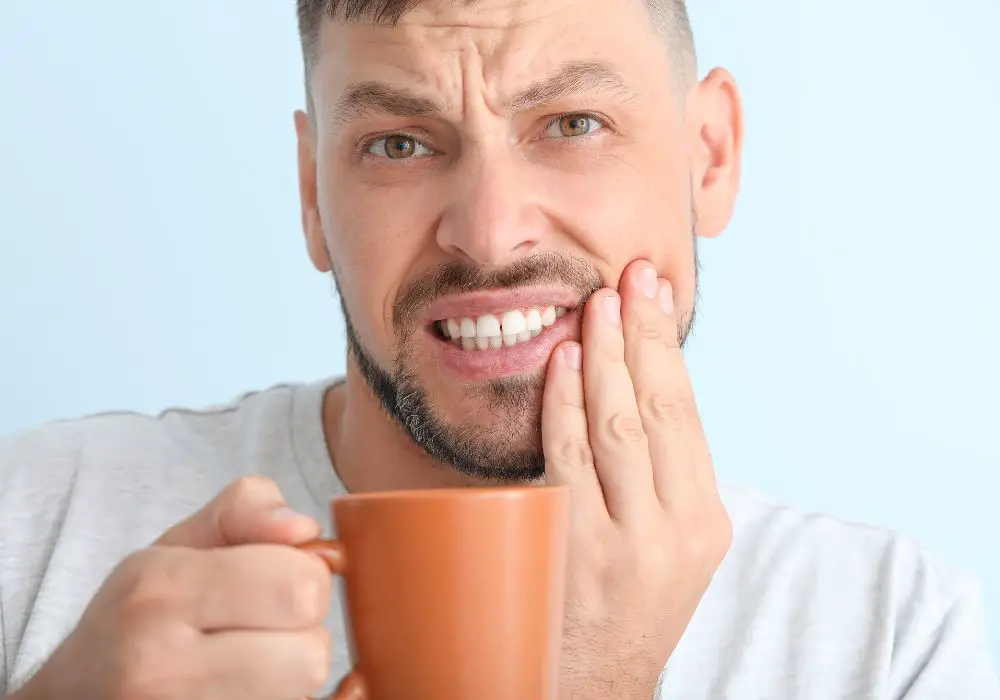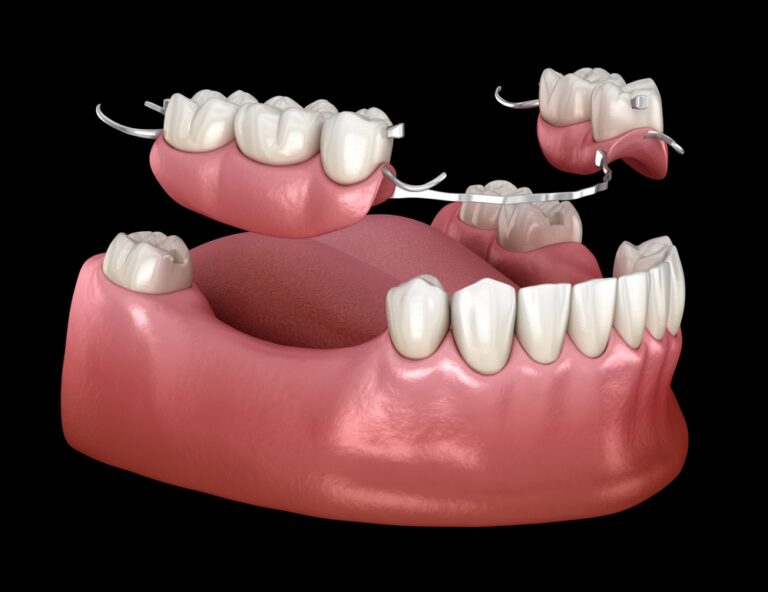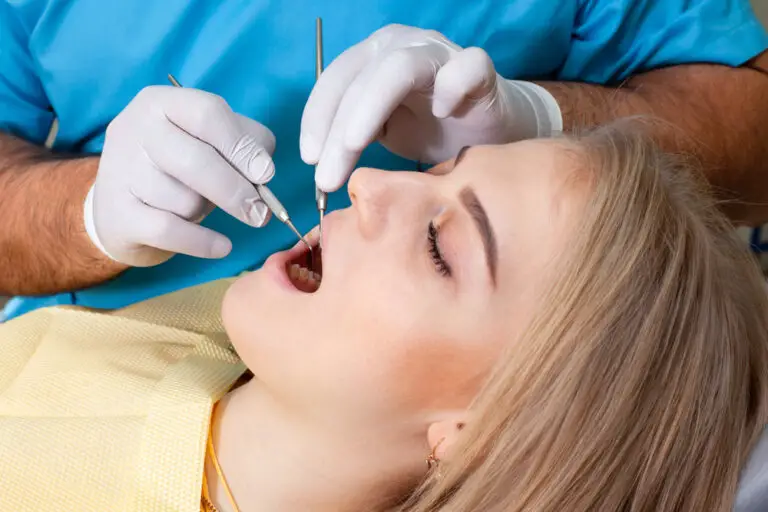Human teeth are remarkable in their ability to withstand extreme heat and thermal shock. But what are the exact thresholds where elevated temperatures begin damaging the different structures of teeth? In this comprehensive article, we’ll take an in-depth look at how heat impacts the enamel, dentin, and inner pulp tissue that compose these hard-working chompers.
Enamel: The Heat-Resistant Outer Shield

The enamel layer that covers the visible crown of our teeth is the most mineralized and durable substance in the human body. Enamel is composed of densely packed hydroxyapatite crystals that provide rigidity, strength, and fracture resistance.
But enamel’s high mineral content, nearing 97% by volume, also makes it an excellent thermal insulator. The thermal conductivity of enamel measures around 0.92 W/mK, five times lower than metals like iron or copper. This means enamel conducts and absorbs heat very poorly, helping insulate the inner tooth layers.
Enamel starts to sustain microscopic cracks and fractures at temperatures exceeding 1,472°F (800°C). However, brief exposure to such extreme heats won’t necessarily damage enamel. That’s because of enamel’s low thermal diffusivity — it takes time for heat to penetrate beyond the outer enamel surface and impact the deeper layers.
For example, boiled water reaches 212°F (100°C) but brief contact with teeth only raises enamel temperature by a few degrees. The thickness of the enamel layer also influences its ability to withstand abrupt temperature spikes. Incisors are the most thermal shock-resistant teeth, with the thickest enamel at 1.1 – 2.5 mm.
Dentin: Greater Organic Content Reduces Heat Tolerance
Underneath the enamel layer lies dentin, the bulk of each tooth’s structure. Dentin contains 70% mineral material by weight, primarily hydroxyapatite crystals like enamel. But dentin also holds around 20% organic material, mostly collagen proteins, which reduce its thermal fortitude.
Dentin can safely endure temperatures up to 392°F (200°C) without microscopic cracking and tubule changes. Above this threshold, the collagen matrix becomes denatured and shrinks, creating small fissures and pores. Prolonged exposure to such hot temperatures can kill the dental pulp inside.
Dentin is slightly more thermally conductive than enamel, measuring around 1.2-1.6 W/mK. This means heat penetrates dentin faster, making the pulp more susceptible to thermal irritation. Dentin gradually thickens with age as sclerotic changes reduce permeability. Highly sclerotic dentin is more resistant to heat damage.
The Pulp: Ground Zero for Thermal Injury

At the center of each tooth lies the pulp chamber. This contains soft connective tissues, nerves, arteries and veins that keep the tooth alive. The pulp is extremely vulnerable to thermal irritation and damage.
Research shows the initial threshold for reversible pulpitis is around 109°F (43°C). Sustained irritation and inflammation occur from 140-194°F (60-90°C), resulting in pulp death and necrosis if unchecked. By 200°F (93°C), the pulp tissue is essentially cooked and destroyed.
Why is the pulp so thermally sensitive? Firstly, it has an extensive blood supply, and vascular tissues are easily injured by heat. Secondly, fluid-filled pulp tissue is approximately 85% water. Water’s high specific heat capacity allows efficient heat transfer—the pulp temperature tracks closely with the temperature of its surroundings.
Lastly, dentin does not provide as complete insulation from external temperatures as enamel due to its lower mineral content and higher conductivity. Gradual fluid shifts in the dentinal tubules allow heat to reach the pulp faster.
How Hot Foods and Drinks Can Harm Teeth
Brief contact with hot foods and beverages does not damage enamel or dentin. However, prolonged exposure to extreme temperatures can threaten enamel and destroy the internal pulp:
- Touching 212°F (100°C) water – Safe up to 5 minutes. Pulp remains under 117°F (47°C).
- Drinking 175°F (79°C) coffee – No harm over months/years. Pulp spike ~18°F (10°C).
- Eating fresh pizza (290°F / 143°C) – Temporary irritation only.
- Bitting 400°F (204°C) panini – Risks dentin changes after 30 seconds.
- Swishing 212°F (100°C) oil – Necrosis danger after 10 seconds.
Chewing, drinking or swallowing hot items quickly is key—this prevents tooth pulp from exceeding 185°F (85°C) for over a minute, avoiding irreversible damage. Cautiously sipping scalding liquids raises concerns.
Extreme Dental Procedures Push Limits
Some dental treatments use extreme heat to restore teeth and remove decay. These procedures approach or exceed enamel’s melting point of 2,300°F (1,260°C)!
- Lasers (1,832°F / 1,000°C+) – Precise, pulsed energy absorbs into mineralized tissue.
- High-speed drills (302°F / 150°C) – Water spray prevents thermal injury.
- Electrosurgery (1,292°F / 700°C) – Alternating current cuts and cauterizes tissue.
Newer thermally-activated techniques are also being explored, including using overheated gutta-percha for obturations and warm vertical condensation during root canals. But skill and caution remain vital to prevent iatrogenic thermal damage.
At What Temperatures Do Teeth Sustain Damage?
- Enamel fracture threshold – 1,472°F (800°C)
- Dentin microscopic damage – 392°F (200°C)
- Pulp reversible inflammation – 109°F (43°C)
- Pulp necrosis onset – 194°F (90°C)
In summary, enamel can withstand the hottest temperatures but heat quickly penetrates to damage the vulnerable pulp. When consuming hot foods/drinks, moderation and minimization of direct contact time on teeth are key to avoiding thermal injury.

Frequently Asked Questions
Can hot coffee permanently damage teeth?
No, brief contact with hot coffee does not damage enamel or dentin. But holding very hot coffee in the mouth for over a minute can irreversibly damage the tooth pulp. Always wait for coffee to cool down or add cold milk to rapidly reduce its temperature before drinking.
What temperatures kill nerves in teeth?
Tooth pulp containing nerves and blood vessels is extremely sensitive to heat. Prolonged exposure to just 109°F (43°C) can inflame the pulp. Nerve death and necrosis begin to occur between 140-194°F (60-90°C).
Does thickness of enamel impact its heat tolerance?
Yes, thicker enamel better withstands extreme heat and thermal shock. Incisors have the thickest enamel at up to 2.5mm and are most resistant. Thinner molar enamel can more easily fracture from temperature swings.
Can dentists drill teeth without heat damage?
Yes, dentists use water cooling and minimize drill times to prevent excessive heat buildup. Enamel can safely endure up to 302°F (150°C) for short durations. Thermal injury risks occur above 392°F (200°C) during longer procedures.
Which dental procedures use the most heat?
Electrosurgery procedures generate the most heat, with tips reaching 1,292°F (700°C). Next are dental lasers, which can exceed 1,832°F (1,000°C) focused on the tooth surface. High-speed drills also generate friction heat up to 302°F (150°C) during enamel cutting.







